From Web Analytics to Demand Generation
ActiveConversion first became known for its sales-focused Web Analytics, such as identifying companies that visit your website (similar to Leadlander). Therefore I initially called them a ‘niche vendor’. However, the product has evolved into a fairly complete marketing automation suite for SMB companies. So the people behind ActiveConversion gave me a demo to show they are more than a niche player.
Anonymous Visitor Identification
ActiveConversion provides reports on anonymous website visitors: they show the company name and activity. It integrates with Jigsaw to show company details like revenue, and available contacts for a specific company: contacts can be bought for $1 each directly at Jigsaw.
There are two ways to identify visitors:
- They fill out a form on your website
- They click on a link in an email that you sent them
After that, the (previously anonymous) website sessions are linked to a specific person.
Lead Scoring
Lead scoring works for both anonymous and known visitors: for anonymous visitors the triggers for increasing the lead score are somewhat limited, essentially page views and return visits. For known visitors you can also track clicks from emails you sent them. It’s fairly basic compared to some of the more expensive systems, but effective and easy to use.
Form builder
The form builder works different from some higher-end systems that actually host the entire landing page for you. ActiveConversion generates HTML code for you, so you can include it in a page on your own website. As far as I understand it, it uses the JavaScript tracking code (installed for Web Analytics) to also read the form data and save it in the ActiveConversion database, rather than using a traditional form submission. It can also integrate with Salesforce Web-to-Lead forms.
Email marketing
ActiveConversion supports both one-time emails to a segment of the database, as well as drip emails that are triggered after a prospect registers. By default it uses VerticalResponse as the underlying email system, fully integrated in the ActiveConversion user interface. However, customers can also use any of the 10 ESPs that they have integrated with.
Salesforce.com integration
ActiveConversion also integrates with Salesforce.com, although using Salesforce is not a requirement. Typically, new leads are assigned to sales person before they are copied to Salesforce.com: the assignment rules are flexible. Also, when a visitors registers, ActiveConversion will check in Salesforce if that email address is already present, to avoid duplicates. So there is data exchange on demand, but not a full bidirectional synchronization like in most of the more expensive lead management systems. The visitor activity is also exported to Salesforce.com and shown in the lead record (see screen shot).
Marketing & Web Analytics
The marketing reporting features allow you to monitor performance of various marketing activities. There are several reports including reports on qualified contacts and website visits as a result of emails, pay-per-click campaigns and other online advertisements. Several reports can also be emailed on a daily or weekly basis.
Basic web analytics is also included, so many customers don’t use additional web analytics. Only customers with specific conversion tracking (e.g. e-commerce websites) typically use a dedicated web analytics product such as Google Analytics.
Conclusion
Based on the demo I attended, I feel that ActiveConversion is a good first B2B demand generation solution for smaller companies. It is easy to use, it has significantly more features than Leadlander (which is cheaper and narrower in scope), it is a notch up from InfusionSoft (which focuses on the smallest companies), and it is cheaper than most other Demand Generation vendors.
If you’re looking for an entry-level B2B lead management solution, check out their 30-trial. If you’ve verified that it has all the features you want, you get excellent value for money, starting at $250 per month.
Have you worked with ActiveConversion? Please leave a comment or email me with your experiences.

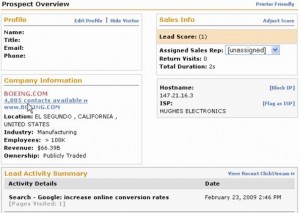
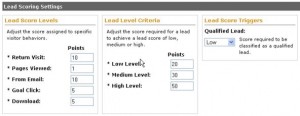

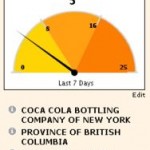
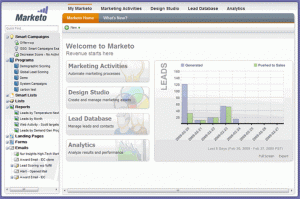
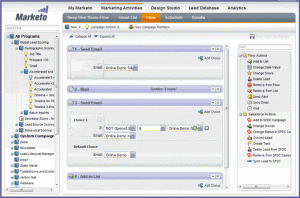
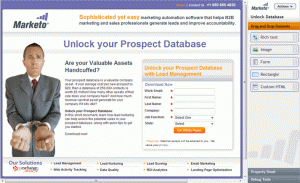
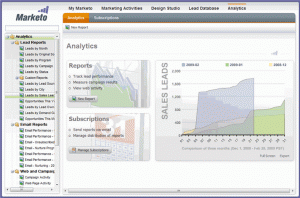
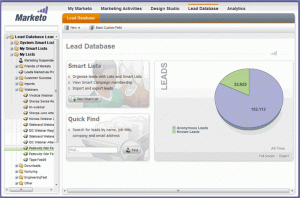
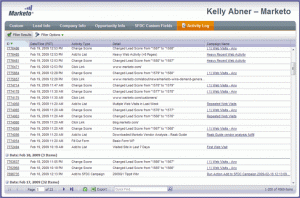
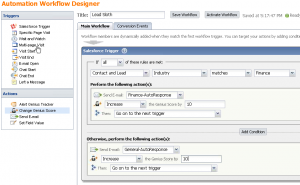
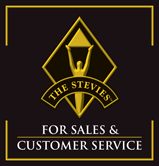 The
The 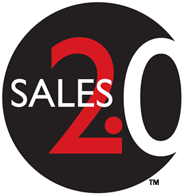 “Sales 2.0 brings together customer-focused methodologies and productivity-enhancing technologies that transform selling from an art to a science. Sales 2.0 relies on a repeatable, collaborative and customer-enabled process that runs through the sales and marketing organization, resulting in improved productivity, predictable ROI and superior performance.” – Pelin Wood Thorogood and Gerhard Gschwandtner
“Sales 2.0 brings together customer-focused methodologies and productivity-enhancing technologies that transform selling from an art to a science. Sales 2.0 relies on a repeatable, collaborative and customer-enabled process that runs through the sales and marketing organization, resulting in improved productivity, predictable ROI and superior performance.” – Pelin Wood Thorogood and Gerhard Gschwandtner The key to their approach is an advanced lead nurturing engine, to avoid “follow-up failure”. They claim that the first sale usually takes place after 7 follow-ups, but that most sellers stop following-up after 3 tries. A convincing story, and thousands of customers are using InfusionSoft, so it must be working.
The key to their approach is an advanced lead nurturing engine, to avoid “follow-up failure”. They claim that the first sale usually takes place after 7 follow-ups, but that most sellers stop following-up after 3 tries. A convincing story, and thousands of customers are using InfusionSoft, so it must be working. Genius.com
Genius.com  Loopfuse, a provider of open source marketing automation and email marketing solutions, has
Loopfuse, a provider of open source marketing automation and email marketing solutions, has